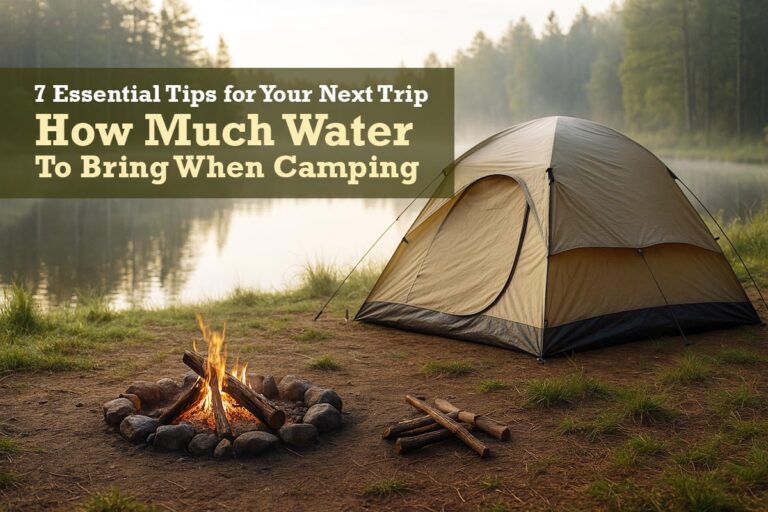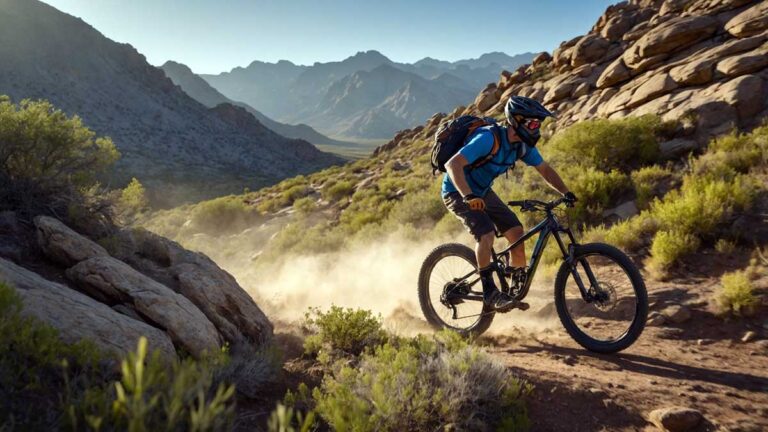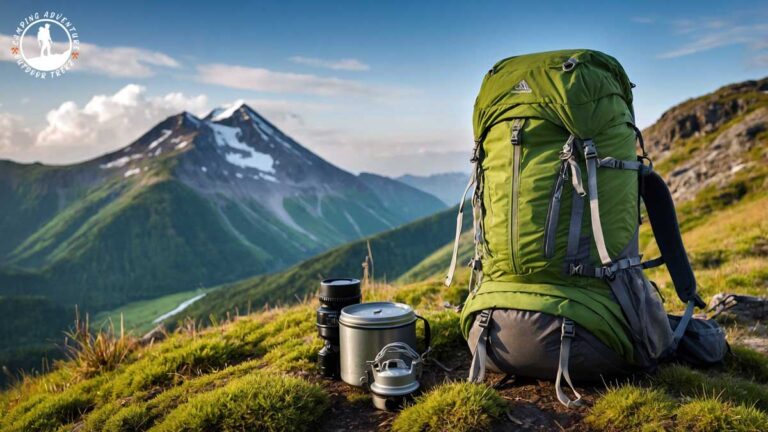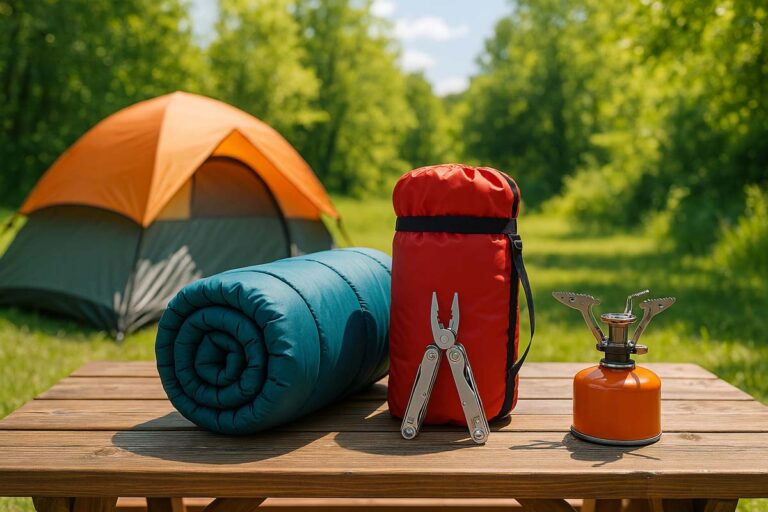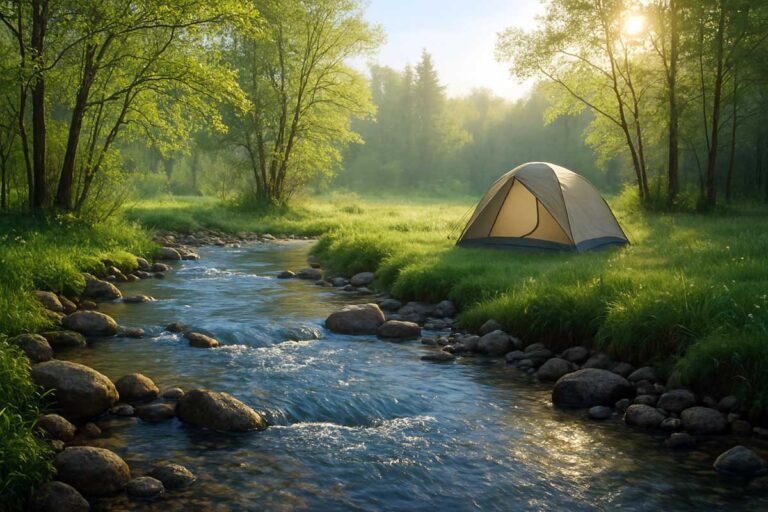How Long Should 230gals of Water Last Camping: 5 Things to Clear
In short, with 230 gallons of water, you can expect it to support roughly 15 to 23 days of camping, depending on group size and daily consumption.

When considering how long should 230gals of water last camping, I base my advice on years of practical experience in the outdoors. I’ve spent many years camping and have learned a great deal about water consumption in the field. In this article, I will explain how to estimate your water needs, factors that affect consumption, and how to plan for various camping scenarios. My goal is to provide clear, reliable advice that you can trust on your next trip.
Contents Include
Understanding Water Consumption on a Camping Trip
Water is one of the most important resources while camping. It is used not only for drinking but also for cooking, cleaning, and sometimes even for hygiene purposes. It is crucial to have enough water for the duration of your camping trip, and careful planning helps prevent shortages.

Daily Water Needs
A general guideline suggests that campers require approximately 1 gallon of water per person per day for drinking and basic hygiene. This estimate can vary based on factors such as climate, activity level, and individual needs. For instance, the U.S. National Park Service recommends drinking at least 2 liters (about 0.5 gallons) of water daily, especially in hot climates.
Beyond drinking, water is also needed for cooking, cleaning, and personal hygiene. Some campers suggest allocating an additional 0.5 to 1 gallon per person per day for these purposes, bringing the total to approximately 1.5 to 2 gallons per person per day. However, this can vary significantly based on personal habits and conservation efforts.
Calculating Water Supply Duration
To estimate how long 230 gallons will last, consider the number of campers and their daily water usage:
For Drinking Only (1 gallon per person per day):
- 1 person: 230 days
- 2 people: 115 days
- 4 people: 57.5 days
For Drinking and Other Uses (2 gallons per person per day):
- 1 person: 115 days
- 2 people: 57.5 days
- 4 people: 28.75 days
These figures are theoretical maximums and actual usage may vary. Factors such as weather conditions, physical activity, and individual habits can influence water consumption.
Other Uses of Water
Besides drinking, water is used for:
- Cooking: Boiling water for meals or making beverages.
- Cleaning: Washing dishes and hands.
- Personal hygiene: Quick washes or basic sanitation.
Each of these uses adds to the total amount of water needed, and the overall consumption will depend on the size of your group and the nature of your activities.
In short, with 230 gallons of water it can last roughly 15 to 23 days depending on your group size and daily usage.
Also see: What to Bring Camping
Factors Influencing Water Duration
The duration that 230 gallons of water will last depends on several factors. Here, I’ll discuss the main aspects that you should consider when planning your water needs.
Group Size and Activity Level
- Group Size: The more people you have, the faster you will use up your water supply. A small group of two or three might find that 230 gallons lasts for a longer period compared to a larger group.
- Activity Level: If your group is involved in a lot of physical activities, such as long hikes or heavy manual tasks, the water consumption for hydration increases. Additionally, more water may be needed for cooking if you prepare hot meals that require boiling water.
Weather Conditions
- Hot Weather: In warm or humid conditions, water needs can increase significantly. Sweating and the need for additional hydration mean that you might consume more than the standard guideline.
- Cool Weather: In cooler climates, the need for hydration might be lower, and water consumption could decrease slightly.
Duration of the Trip
- Short Trips: For a one or two-day outing, 230 gallons is more than enough for a small group.
- Extended Trips: For longer trips, you will need to plan carefully. The water supply must be calculated based on the number of days and the expected daily usage per person.
Additional Uses and Emergencies
- Cooking and Cleaning: Plan extra water for cooking and cleaning. While drinking water is the priority, using water for other purposes is equally important.
- Emergency Reserve: It’s wise to have a buffer in case of unexpected needs or emergencies. This reserve could cover additional hydration or be used in unforeseen situations.
Calculating Your Water Needs
To determine how long 230 gallons of water will last, you need to break down the total usage into daily consumption per person. Below is a step-by-step method to help you plan your water needs.
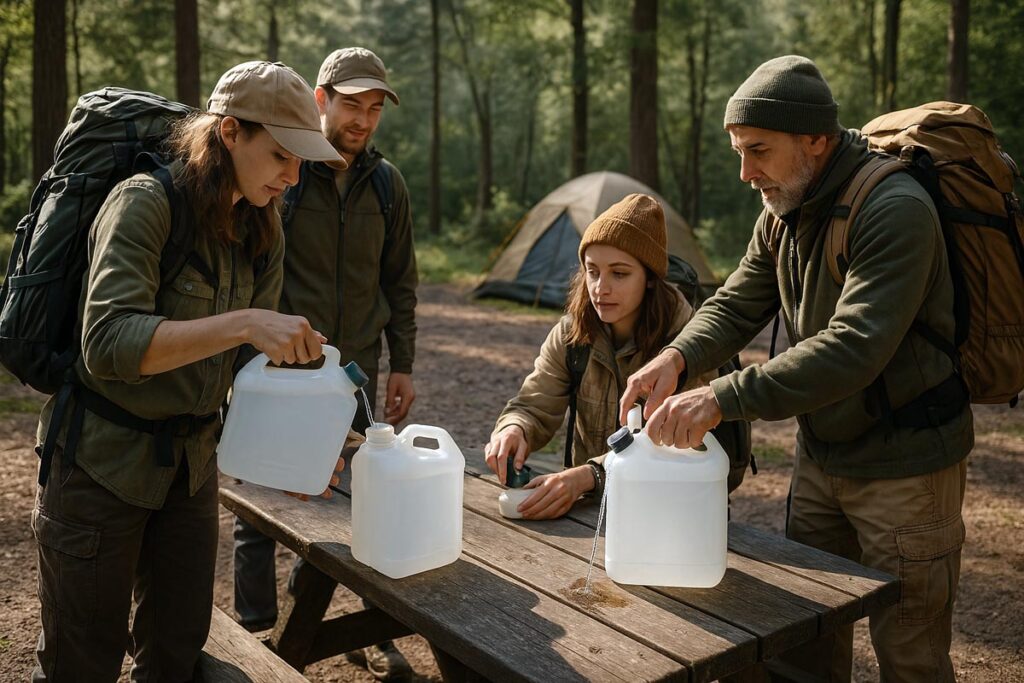
Step 1: Estimate Daily Consumption
Begin by estimating how many gallons each person will use per day. As a starting point, assume that one person uses:
- Drinking: 1 gallon
- Cooking: 0.5 gallon
- Cleaning/Hygiene: 0.5 gallon
This gives a total of 2 gallons per person per day. Adjust these estimates based on your experience and the conditions of your trip.
Step 2: Calculate Total Daily Usage
Multiply the daily water usage per person by the number of people in your group. For example, for a group of 5:
- Total daily usage = 5 persons × 2 gallons = 10 gallons per day
Step 3: Determine the Duration
Divide the total water available (230 gallons) by the daily usage calculated in the previous step:
- Duration = 230 gallons ÷ 10 gallons per day = 23 days
This calculation shows that, under ideal conditions and using 2 gallons per person per day, 230 gallons of water could potentially last a group of five for about 23 days. However, real-life conditions often require adjustments.
Step 4: Factor in Variations
Consider the factors mentioned earlier:
- Hot weather: Increase your daily estimate if the weather is warm.
- Increased activity: If your activities are strenuous, factor in more water.
- Additional uses: Account for extra water needed for cooking, cleaning, and any emergencies.
For example, if you increase the daily requirement to 3 gallons per person, the duration for the same group of five becomes:
- Duration = 230 gallons ÷ (5 × 3) = approximately 15 days
These simple calculations allow you to tailor your water plan based on the specific details of your trip.
Read more: What Food Should You Bring for 3 Days Camping
Planning for Different Camping Scenarios
Each camping trip is unique. Below, I outline several scenarios and strategies to manage water usage effectively.
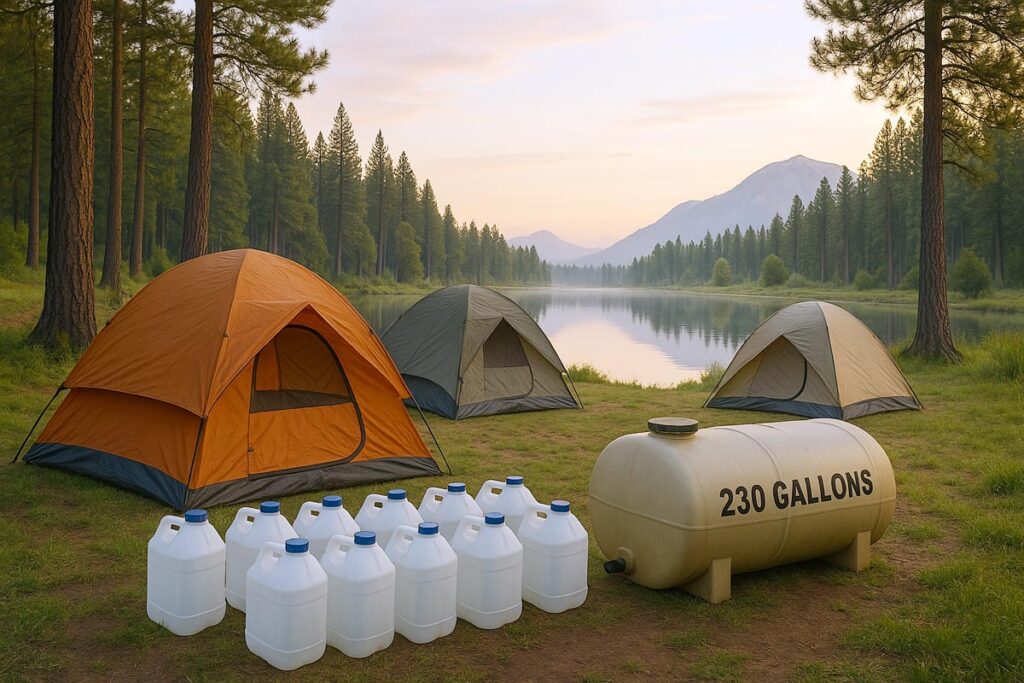
Solo Camping or Small Groups
For solo campers or groups of two to three:
- Manage your consumption: With fewer people, your total water usage will be lower. You may be able to extend your water supply by moderating your daily use.
- Monitor weather and activities: Adjust your plan if you are on a long hike or the weather is extremely hot.
- Store water properly: Ensure that your water is stored in clean, sealed containers to prevent contamination.
Family or Group Camping
When camping with a larger group, planning becomes more critical:
- Pre-plan meals: Create a meal plan that minimizes water usage. Use recipes that require minimal water.
- Group coordination: Communicate with your group about water conservation. Sometimes a little effort from everyone can significantly reduce overall consumption.
- Emergency backup: Always set aside extra water for unforeseen needs. Even a small reserve can be crucial if circumstances change.
Extended Backcountry Trips
On longer trips away from established water sources:
- Accurate calculations: As discussed, calculate the water needs per day, and consider carrying a bit more than your estimated requirement.
- Water treatment: Even if you carry enough water, knowing how to treat local water sources can be very useful. A portable water filter or purification tablets can extend your range.
- Plan stops: If your trip allows, plan stops at natural water sources. Make sure you know how to properly purify the water before use.
Vehicle Camping
When camping near your vehicle or in areas with easy access to resources:
- Carrying capacity: You might have more options for storing water, so ensure you take advantage of larger containers.
- Multiple uses: Plan for water usage beyond just drinking. Consider the needs for cooking and personal hygiene.
- Flexibility: If you have the option to refill from local supplies, you can adjust your consumption without worry.
Practical Tips to Optimize Your Water Supply
Based on my experience camping across different terrains and weather conditions, here are some practical tips that have helped me manage water usage effectively.

Prioritize Drinking Water
Your health and safety come first, so always reserve the majority of your water for drinking. If you find that you need extra water for physical activities, adjust accordingly, but never compromise your hydration.
Use Water Efficiently for Cooking
When cooking, consider methods that use less water. For example:
- One-pot meals: Cooking in a single pot can reduce the amount of water needed for both preparation and cleanup.
- Pre-soaking foods: In some cases, pre-soaking ingredients can shorten cooking time and reduce water usage.
Keep Your Water Clean
Maintaining water quality is crucial. Use proper storage containers and seal them tightly to avoid contamination. If you suspect your water may be unsafe, treat it with the appropriate purification method before use.
Track Your Consumption
I recommend keeping a simple log of your water usage each day. This record helps you adjust your plan as needed and ensures that you do not run out of water unexpectedly.
Be Prepared for Emergencies
Always have a contingency plan. Carry extra water if possible, and ensure that you have the tools necessary to purify water in case your primary supply is compromised.
Use Local Resources Wisely
If your camping area has natural water sources, learn how to collect and purify water properly. This can reduce the load you need to carry and provide a fresh supply when needed.
Real-Life Examples and Calculations
Let me share a couple of real-life examples from my own trips to illustrate how these calculations work in practice.
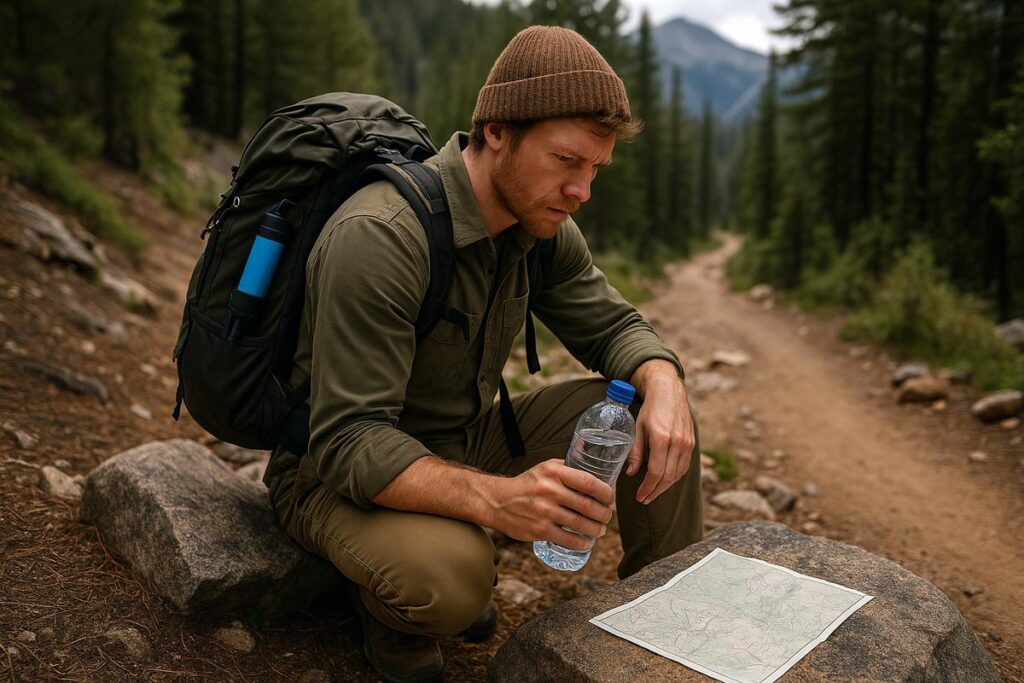
Example 1: Weekend Camping with Family
For a family of four on a 3-day weekend trip:
- Estimated daily usage: 2 gallons per person per day
- Total usage: 4 persons × 2 gallons × 3 days = 24 gallons
In this case, 230 gallons of water would be more than enough. Even if you add extra water for cooking and emergencies, you are unlikely to come close to exhausting your supply.
Example 2: Extended Trip in Hot Weather
For a group of five on a 15-day extended backcountry trip in a warm climate:
- Increased usage due to weather: 3 gallons per person per day
- Total usage: 5 persons × 3 gallons × 15 days = 225 gallons
This scenario shows that with careful planning, 230 gallons of water can nearly cover the trip. However, it is always wise to carry an extra margin for safety, particularly in unpredictable conditions.
Example 3: Solo Camper on a Multi-Day Hike
For a solo camper on a 10-day hike:
- Standard consumption: 2 gallons per day
- Total usage: 1 person × 2 gallons × 10 days = 20 gallons
In this instance, carrying 230 gallons would be excessive. Instead, I often use a combination of carried water and filtered local sources. This method allows me to reduce the amount of water I need to carry and ensures I have enough throughout the trip.
Additional Considerations
When planning your water supply for camping, consider these extra points:
- Weight and Volume: Carrying water can add significant weight. Consider the capacity of your vehicle or the physical burden if you’re hiking. Lightweight, collapsible water containers can be useful.
- Storage Conditions: Extreme temperatures can affect water quality and the integrity of storage containers. Keep your water in a shaded, cool area whenever possible.
- Backup Systems: For those who camp in remote areas, having backup purification methods is critical. Water filters, purification tablets, and even portable UV systems can be lifesavers.
Final Thoughts
To summarize, determining how long 230gals of water will last camping depends on your group size, daily consumption per person, weather conditions, and the nature of your trip. By estimating daily usage and accounting for additional needs such as cooking and cleaning, you can plan your water supply accurately. Here’s a brief recap of the steps discussed:
- Estimate Daily Consumption: Start with a baseline of 2 gallons per person per day, and adjust as necessary.
- Calculate Total Daily Usage: Multiply the per-person consumption by the number of people.
- Determine the Duration: Divide the total water supply by the daily usage.
- Adjust for Conditions: Consider weather, activity level, and extra water for cooking and cleaning.
- Plan for Emergencies: Always include a safety buffer and have a plan for water purification if needed.
I hope this detailed guide has provided you with the clear, practical information you need. As someone who has spent countless days in the outdoors, I understand the importance of being prepared, and I trust that this advice will help you manage your water resources efficiently. Whether you are planning a solo adventure or a group trip, always remember that thoughtful preparation is key to a safe and enjoyable camping experience.
Happy camping, and may your adventures be safe and well-hydrated!

